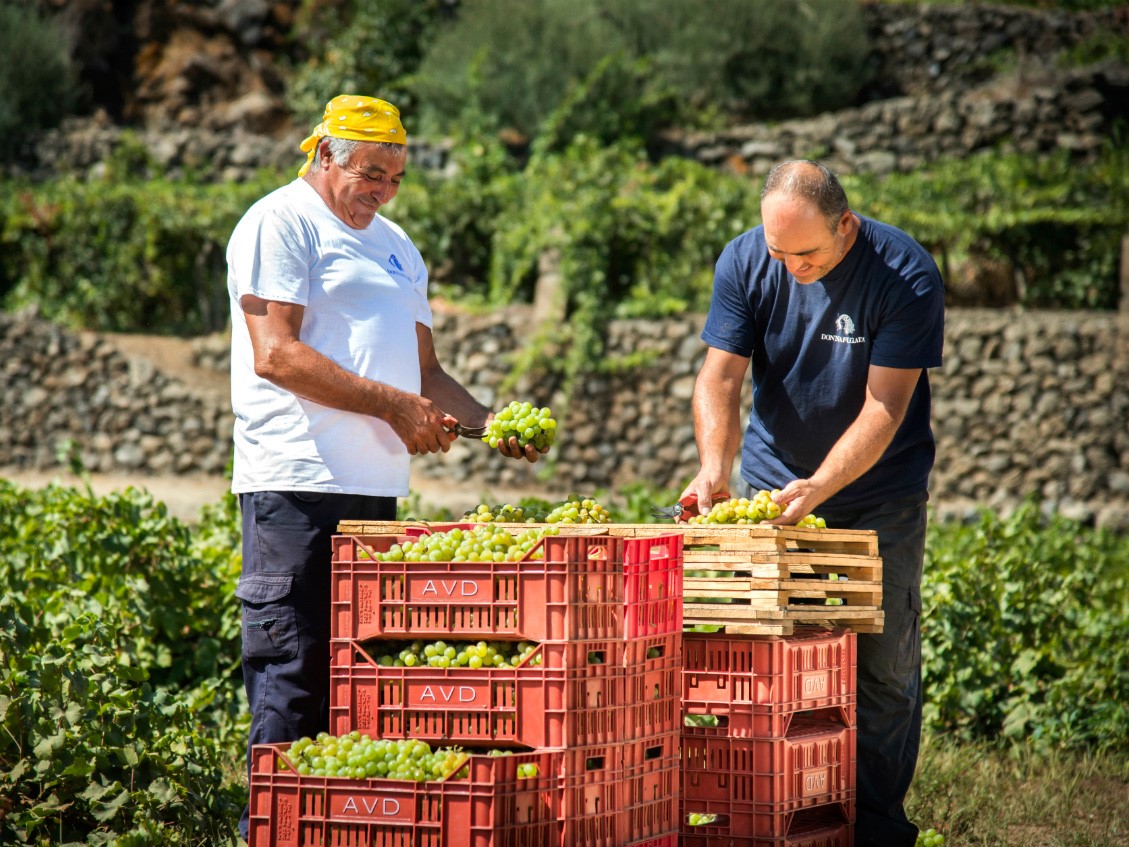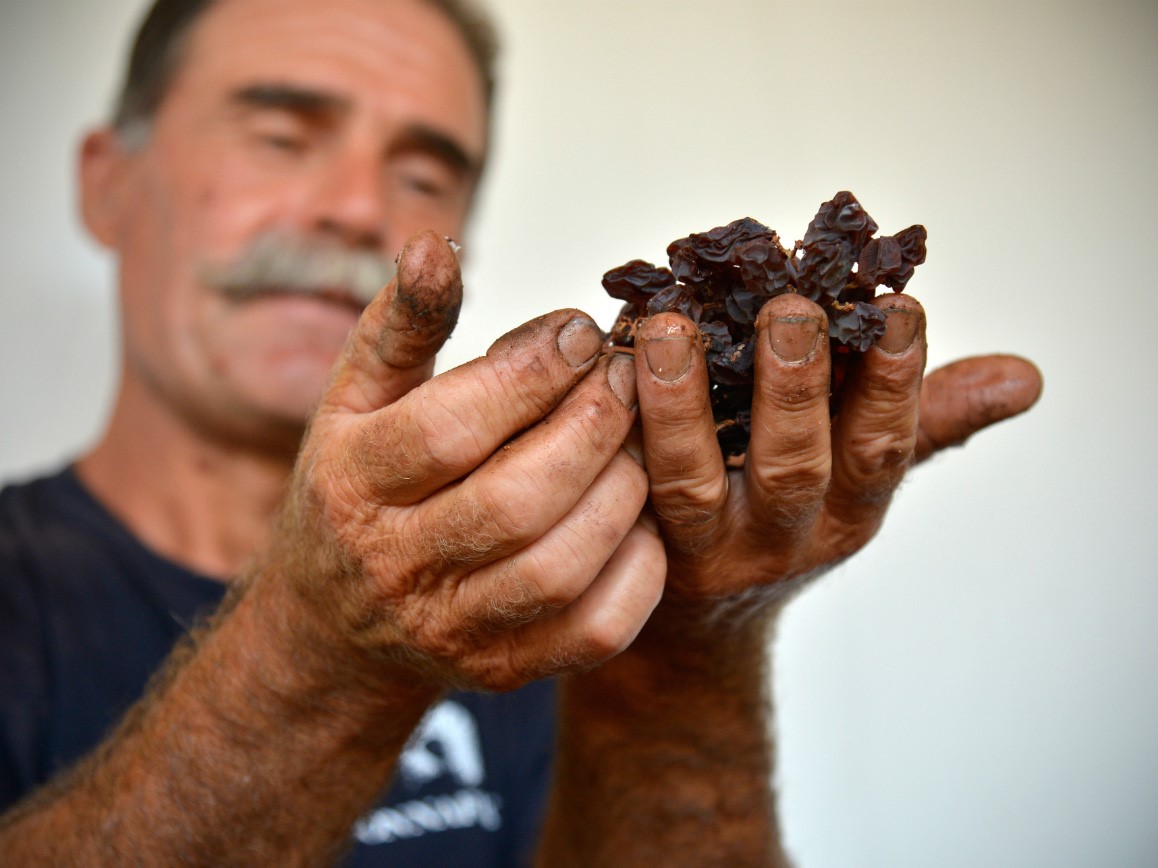“If we want things to stay as they are, things will have to change.” —Excerpt from The Leopard by Guiseppe Tomasi di Lampedusa
Attempting to understand Sicily is infeasible; it is enigmatic and substantial, contradictory and authentic. An island in the heart of the Mediterranean that unites three continents, Sicily has bounty so great that early inhabitants considered it a gift from the gods. Millennia of fracture and repair, and conquer and unification, have been key in molding the sturdy yet equally supple character of the Sicilian people.
“To understand Sicily, you must read Il Gattopardo,” says José Rallo. Written in the late 1950s, Il Gattopardo (The Leopard) is the only novel by Sicilian Guiseppe Tomasi di Lampedusa. Considered one of the most important pieces of modern Italian literature ever penned, The Leopard was made into a movie by Luchino Visconti and starring Burt Lancaster in 1963. Beginning in Palermo in 1860, the story details the tumultuous late life of the Prince of Salina and his aristocratic family amid Sicily’s development during civil war and revolution.
The book is also the inspiration behind Donnafugata winery.
The Rallo family of Marsala in western Sicily has been making wine here for generations, starting at roughly the same time that Lampadusa’s book commences. However, as lifestyles began to change dramatically later in the 20th century, Giacomo Rallo saw the writing on the wall for his beloved sweet and oxidative Marsala wines: the typical rich Sicilian diet paired with highly caloric vino was no longer in fashion. “My father saw life had changed,” says his daughter, José. “At that time, we ate pasta and meat at lunch, and drank Marsala. At dinner, we ate pasta and meat, and drank Marsala. People who drank Marsala were getting old. He saw the new way.”
Meanwhile, Giacomo’s wife Gabriella, a former English teacher, became enamored by vines. In 1974, an investment estate at Contessa Entellina, 60 kilometres south of Palermo (and roughly the same distance inland from Marsala), was passed to Gabriella from her father. Despite the buildings on the estate—and the road to it—having been destroyed by a sequence of earthquakes in 1968, she drove from Marsala to the vineyard each day. With little knowledge of viticulture, Gabriela immersed herself in this new challenge; she travelled the world seeking advice from winemakers and consultants, while also experimenting with her own vines that would take the family in a new wine direction.
After a decade, she was ready: Donnafugata was born.
“Never had he been so glad to be going to spend three months at Donnafugata as he was now, in that late August of 1860. Not only because he loved the house, the people, the sense of feudal ownership still surviving there…” —Excerpt from The Leopard by Guiseppe Tomasi di Lampedusa
In Lampedusa’s novel, Donnafugata is a fictional place based on an existing one, notably located near Contessa Entellina. The estate was beautifully rebuilt, a comfortable villa set upon the estate’s 270 hectares. Giacomo did not share Gabriela’s enthusiasm for naming this new brand of wines after the revered Sicilian novel. However, once Gabriella designed the label and presented it to him, he admitted, “As usual, Gabri, you are right.”
The winery land was modernized, and the grounds were magnificently designed by Gabriella. The bounty of Sicliy is revealed in the gardens she planted herself: cacti; Cyprus and orange trees; and olive, carob, and palm trees. The villa is depicted on the label of Donnafugata’s nero d’avola-based red blends, Tancredi and Sedàra. In Lampedusa’s novel, the character Tancredi, as described by his uncle, the Prince of Salina, is one with “a riotous zest for life and a frivolous temperament contradicted by sudden serious moods.” Angelica Sedàra, Tancredi’s love, is likewise chronicled by the prince: “She was tall and well-made, on an ample scale; her skin looked as if it had the flavour of fresh cream which it resembled, her childlike mouth that of strawberries.”
In the late 1980s, Giacomo gathered the extended family, and they came to a monumental verdict: sell their Rallo brand, along with its name—their family name. There was little choice; in order to expand, they needed capital. “It was a scary thing,” José admits. “It was [selling] the story of the family.” Fortunately, the transaction did not include the family’s historic winery within the city.
Because while Contessa Entellina may be the heart of Donnafugata’s numerous vineyard assets, the Marsala winery is its history, its spine—and the site best suited to tourism. All of Donnafugata’s white table wines are made at the Marsala property, including the first to grace Donnafugata’s portfolio: its worldwide superstar, Anthília. Visiting the vast barrel cellar, with its distinct bouquet of wine and wood, you can contemplate the story of Donnafugata’s epochal red, Mille e Una Notte (One Thousand and One Nights). Picture the former glory of the now-crumbling palace of Santa Margherita di Belice depicted on its label (thus in Lampadusa’s novel) as the wine silently ages, deep underground, waiting for release.
Then there is Pantelleria, an island in the Strait of Sicily where the tides and winds are said to be the true rulers. It is a place of farmers, not fishermen, as one would expect; it is also a relatively undiscovered destination.
Pantelleria is almost ceaselessly battered by winds, which can be challenging from a seafaring perspective, but equally so from an agricultural one. Sicily’s largest outpost island is only 14 kilometres long; anchored in the sparkling Mediterranean, it is closer to Tunisia than to mother Sicily. It appears rather inhospitable with its rocky black edges that typically drop sharply into the sea. Perhaps that is why there is something remarkably genuine about this place.
Stone houses with startling white-domed roofs dot the landscape, and Fiat Pandas are the minuscule vehicle of choice. Pantelleria’s solitude is part of its charm—and possibly why celebrities come to bathe in the Mirror of Venus (a small hot spring-fed lake) and lather themselves with its restorative mud. Giorgio Armani has a home here; it’s where he has spent each summer for the last three decades. And just up the hill from his waterfront refuge is Donnafugata’s newest winery and tasting room.
The Rallo family has 68 hectares of vineyards spread over various Pantelleria sites, the first purchased in 1989. The island’s vines are un-trellised, venerable, and gnarled. No higher than the knee, they are purposely nested in shallow dugouts to maintain a low profile, protected from constant winds. Zibibbo is the grape grown here; also known as muscat of Alexandria, it is a supremely fragrant variety, well suited to the honeyed nectar it becomes as a passito (achieved when grapes, left to dry in the sun, concentrate their sugars). Donnafugata’s iconic dessert wine, Ben Ryé Passito, is made right on this island; Kabir, a lesser sweet wine, also comes from Pantelleria, as does the refreshing Lighea. Lighea, another of Lampedusa’s characters, appeared as a mermaid in his novella The Siren.
Sicilian wine lost a pioneer when Giacomo died in 2016, but his spirit remains with the now-retired Gabriella, who mourns him deeply. Visits to her beloved Contessa Entellina are rare these days, she sadly shares, but when people do come, she adores entertaining and touring her gardens with her guests. José works in the management and communications side of Donnafugata; her brother Antonio is winemaker and viticulturist, and president of the Sicilia DOC Wine Consortium. Like the words of Lampedusa, Donnafugata’s wine lives long past its release.
Read more about wine.











